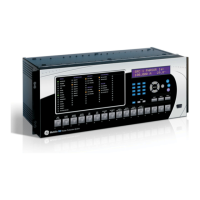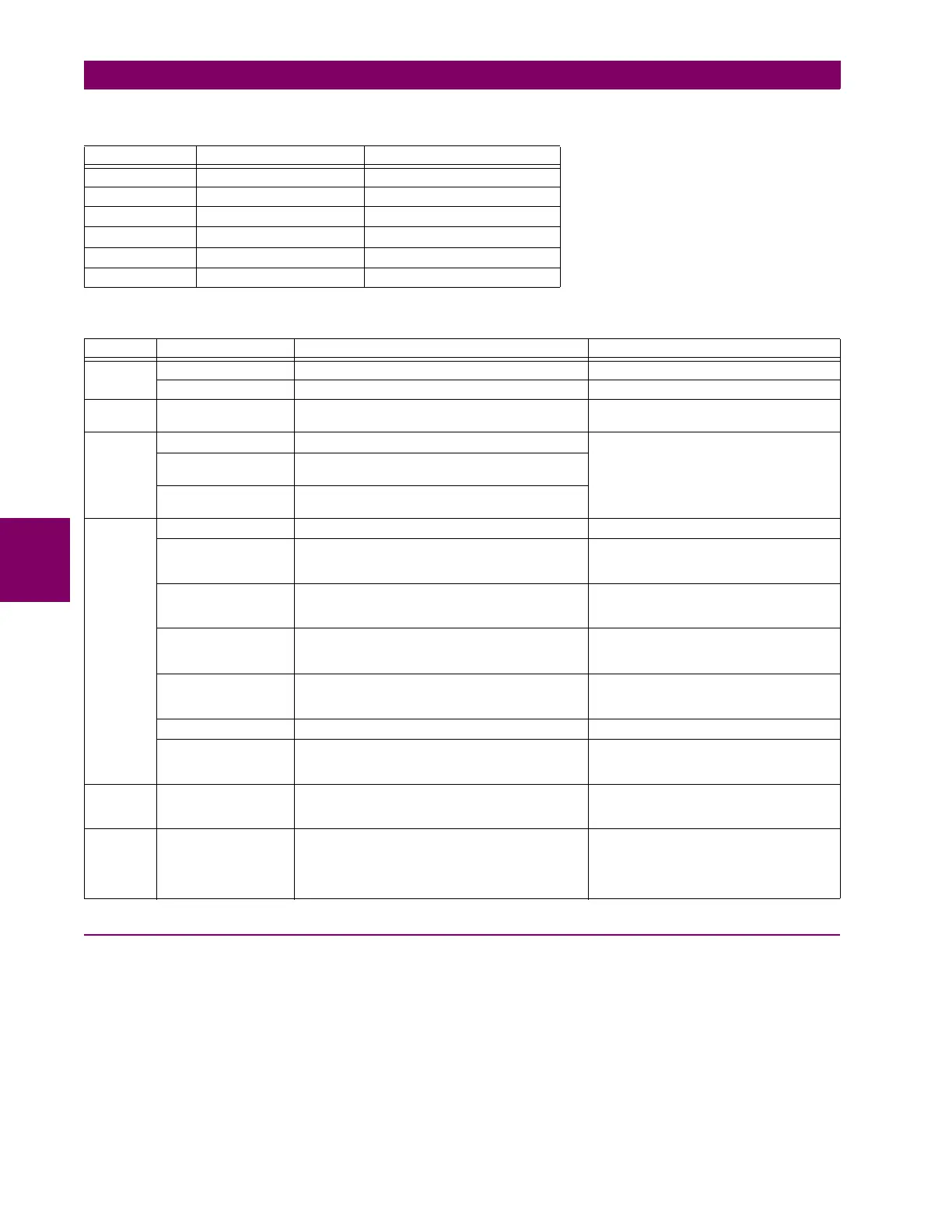5-156 F60 Feeder Protection System GE Multilin
5.5 FLEXLOGIC 5 SETTINGS
5
5.5.2 FLEXLOGIC RULES
When forming a FlexLogic equation, the sequence in the linear array of parameters must follow these general rules:
1. Operands must precede the operator which uses the operands as inputs.
2. Operators have only one output. The output of an operator must be used to create a virtual output if it is to be used as
an input to two or more operators.
3. Assigning the output of an operator to a virtual output terminates the equation.
4. A timer operator (for example, "TIMER 1") or virtual output assignment (for example, " = Virt Op 1") may only be used
once. If this rule is broken, a syntax error will be declared.
Table 5–19: FLEXLOGIC GATE CHARACTERISTICS
GATES NUMBER OF INPUTS OUTPUT IS ‘1’ (= ON) IF...
NOT 1 input is ‘0’
OR 2 to 16 any input is ‘1’
AND 2 to 16 all inputs are ‘1’
NOR 2 to 16 all inputs are ‘0’
NAND 2 to 16 any input is ‘0’
XOR 2 only one input is ‘1’
Table 5–20: FLEXLOGIC OPERATORS
TYPE SYNTAX DESCRIPTION NOTES
Editor INSERT Insert a parameter in an equation list.
DELETE Delete a parameter from an equation list.
End END The first END encountered signifies the last entry in
the list of processed FlexLogic parameters.
One-shot POSITIVE ONE SHOT One shot that responds to a positive going edge. A ‘one shot’ refers to a single input gate
that generates a pulse in response to an
edge on the input. The output from a ‘one
shot’ is True (positive) for only one pass
through the FlexLogic equation. There is a
maximum of 64 ‘one shots’.
NEGATIVE ONE
SHOT
One shot that responds to a negative going edge.
DUAL ONE SHOT One shot that responds to both the positive and
negative going edges.
Logic
gate
NOT Logical NOT Operates on the previous parameter.
OR(2)
↓
OR(16)
2 input OR gate
↓
16 input OR gate
Operates on the 2 previous parameters.
↓
Operates on the 16 previous parameters.
AND(2)
↓
AND(16)
2 input AND gate
↓
16 input AND gate
Operates on the 2 previous parameters.
↓
Operates on the 16 previous parameters.
NOR(2)
↓
NOR(16)
2 input NOR gate
↓
16 input NOR gate
Operates on the 2 previous parameters.
↓
Operates on the 16 previous parameters.
NAND(2)
↓
NAND(16)
2 input NAND gate
↓
16 input NAND gate
Operates on the 2 previous parameters.
↓
Operates on the 16 previous parameters.
XOR(2) 2 input Exclusive OR gate Operates on the 2 previous parameters.
LATCH (S,R) Latch (set, reset): reset-dominant The parameter preceding LATCH(S,R) is
the reset input. The parameter preceding
the reset input is the set input.
Timer TIMER 1
↓
TIMER 32
Timer set with FlexLogic timer 1 settings.
↓
Timer set with FlexLogic timer 32 settings.
The timer is started by the preceding
parameter. The output of the timer is
TIMER #.
Assign
virtual
output
= Virt Op 1
↓
= Virt Op 96
Assigns previous FlexLogic operand to virtual
output 1.
↓
Assigns previous FlexLogic operand to virtual
output 96.
The virtual output is set by the preceding
parameter

